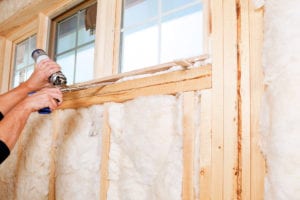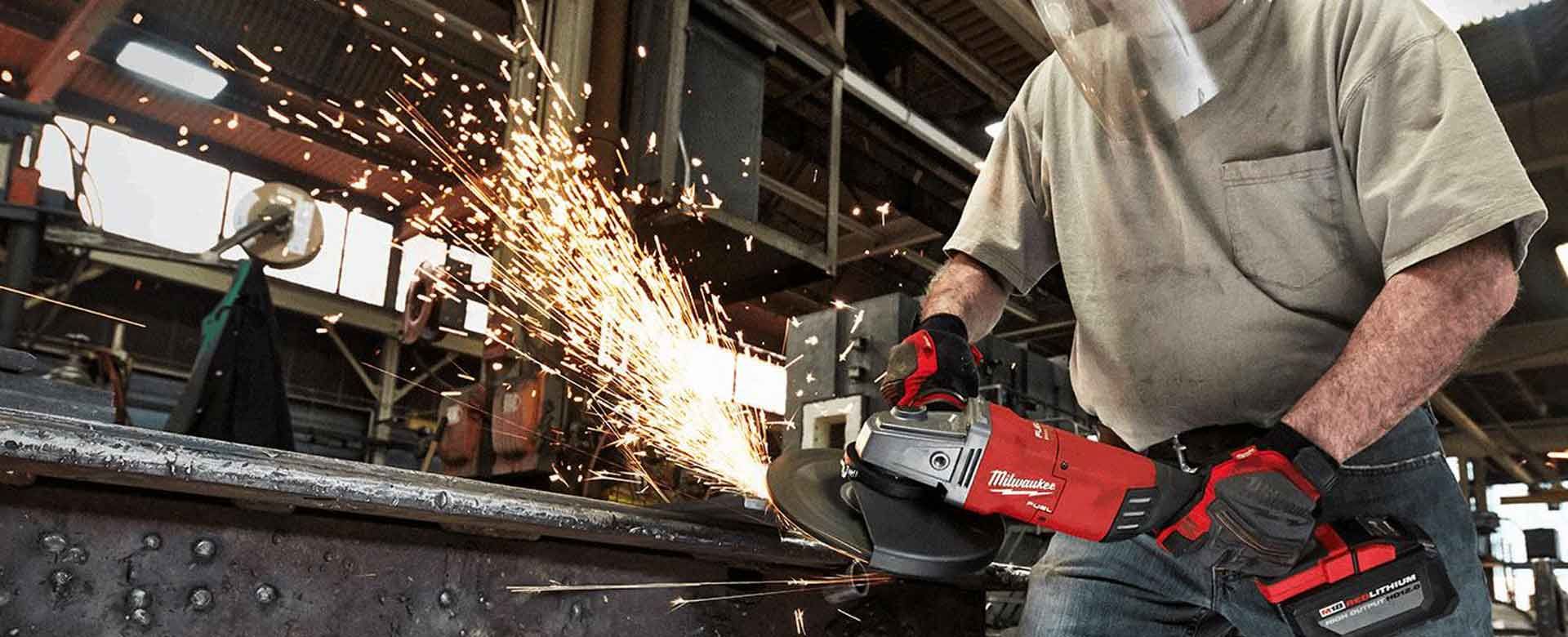- Industrial Supplies
- Coating & Finishing Systems
- Compressed Air Systems
- Assembly Tools
- Industries Served
- Aerospace & Defense
- Automotive & Specialty Vehicles
- Cannabis
- Construction & General Contracting
- Countertop Fabrication & Installation
- Food Processing
- Healthcare & Medical
- Logistics & Distribution
- Manufactured Building & Housing
- Manufacturing
- Metal Fabrication & Steel Works
- Millwork, Cabinetry, & Woodwork
- Packaging
- Pallets & Containers
- Plastics
- School Systems & Universities
- Signage
- Signs & Displays
- Textiles & Nonwovens
- Window & Door Installation
How to choose the right window and door foam
In window installation, the rough opening is the most challenging opening to seal. With complex surfaces and imprecise dimensions, they really do exemplify the term “rough” in the rough opening. It becomes a challenge to seal the varying gaps around a highly engineered and precisely dimensioned window or door into a space that, shall we say, is less than precise or even square. This is a challenge that both retrofit/remodel windows, as well as new construction installations, face.
In the old days, these gaps were filled with everything — newspaper, leftover fiberglass batting, and closed-cell purposely designed backer rod with a caulking sealant gunned into the cavity to make the final seal. The fiberglass or backer rod installation practice is still a viable and generally accepted way to do this; however, it‘s not the most efficient or cost-effective when you have 50-100+ windows to install.
The industry was in search of a better way, not only to provide a better seal over time but a faster and more complete way of sealing irregular cavities around the new window. Enter the 21st century and foam.
Expanding foam is made of several components that, when combined, react with the moisture in the air causing chain reactions in the elements. Those reactions cause the foam to expand to 30-60 times its original volume, depending on the formulation.
No foam

Foam is a sticky, tacky, quick-drying sealant. It works. It’s cost-effective. And it’s a handyman’s go-to. But foam isn’t for every job probably for the same reasons people love it – it’s fast-drying, expanding quickly. It even requires a solvent to clean up the mess as well as ensure there’s no foam where your customer doesn’t want it. For example, you may not want to use foam for renovating historical windows or when the original window is being repaired or saved.
Foam and choosing the right one
When the foam is the right decision for your fast-moving project, you’ll need to select the right foam for the job. Not all foams are created equal. In fact, not all window and door foams are created equal. (But you already knew that!)
Different compounds and resins all impact performance of the final product. In general, the perfect foam is one that, sticks to the materials inside the cavity, expands enough to fill the cavity without racking or squeezing the window or door frame. The right foam also uses a minimal amount of product. Getting the right mixture of all those variants is no small task.
Types of foams
For foams, there are generally two bases: latex– and polyurethane-based. Here are a few benefits and disadvantages for each:
Latex-based foam
It’s the cheapest and most basic foam, and usually when it’s chosen price is the differentiator. This type of foam is typically found in more do-it-yourself (DIY) or residential temporary fix type of applications.
Quality can vary wildly among latex-based brands.
Some of the disadvantages include inconsistent expansion rate which causes inconsistencies in the foam’s ability to resist temperature changes. When it’s hot out, these foams can deteriorate. (See R-values in the finished installation.) These inconsistencies also can result in over-expansion racking windows and doors making them in-operable after installation. Latex-based foams also tendencies to shrink over time and thus will pull away from materials breaking the seal
Polyurethane-based foam
Polyurethane is often considered the professional’s choice. Polyurethane window and door foams are tailor-made for a wide variety of applications. These foams are more stable and have a higher adhesion property which makes them a good choice for sealing cavities with many dissimilar substrates. Polyurethanes also create a consistent cell structure, resulting in consistent R-values.
Types of expansion rates
Foams can be categorized based on their expansion rates. Minimal expansion, medium expansion, and high expansion (sometimes known as triple-expanding).
Select the right foam based on cavity size. Here are a few ideas:
- For smaller cavities (such as window and door installations where the rough opening is generally small, especially in new construction), a minimally expanding foam is the best choice for these projects. Most window and door foams are not fire-rated or approved for use where fire block products are required by code.
- For larger cavities (such as pipes through walls, ductwork, and other protrusions), a medium or high-expansion foam would be the optimal choice.
If you need help deciding the right products, including Fire Block products, contact us.
Types of applications
Foams also have different packaging that enables various applications. Here are the most common packaging and the situations where they are best used.
Straw can
The straw can is used primarily to repair seals or in small, single–use applications. The best way to describe the can itself is like a “cheese whiz,“ where the propellant is directed by pushing the nozzle at an angle from the can. (That’s why they’re great for smaller jobs.)
A disadvantage to these cans is they can’t be cleaned or stored. That means they can’t be saved for later use and create waste. They can also be messy.
Gun-applicator can
These cans feature a threaded boss to be used exclusively with compatible applicators. The valve on the can is a push-type, completely stopping the flow from the applicator. These cans are larger and contain more volume for large jobs. The main benefit of these applicators includes cleaning and storing for extended periods of time. This system is ideal for the professional who values speed and efficiency as well as much less waste.
Dual-use
Modern technology has brought the ability to have both straw-can and gun-applicator together. That means you get the best of both worlds, enabling pinpoint accuracy without all the mess and waste. These cans typically come in a lower volume for smaller jobs.
Elevated recommendations
All things being equal, we have a lot of favorite products for tough jobs. But one of our favorites is the OSI Quad Foam – a premium polyurethane-based, minimally expanding foam. When used with OSI’s all-metal gun applicator you get pinpoint accuracy when dispensing. Quad Foam won’t crack or bow windows or door frames. And when it’s combined with other OSI products, it creates a total sealant package that is fast and easy to install. And who doesn’t like making tough jobs fast and easy?
If you need Quad Foam or prefer another type of foam for the job you’re doing, contact us. We can help make your next window and door installation job quick and simple.
-
 June 2, 2020
June 2, 2020Buying an air compressor – what you need to know
Buying an air compressor is complicated and requires some expert knowledge. Not everyone involved in the buying process is a facility or plan engi… -
 December 28, 2020
December 28, 2020All about Milwaukee Tool
Wisconsin is known for a lot of things – the Packers, “going up North” (for those not in Wisconsin that means vacationing), hockey, fishing, weari… -
 January 5, 2021
January 5, 2021Countertop fabrication, finishing, and installing
If you’re in the countertop business as a construction contractor, countertop fabricator, or countertop installer, you’re…